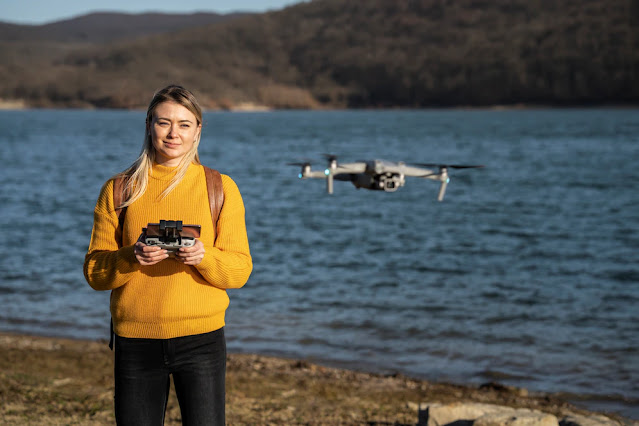Drones that are skilled at effectively collecting data are accepted by the most recent inspection criteria. UAV technology has prompted several industry practices. However, there are a few benefits. Drones aspire to perfection, yet their construction is not faultless.
Learn more about what remote control drones have to offer by looking over the following 10 main unmanned aerial vehicles (UAV) pros.
1. Maintaining a safe environment
Due to improvements in safety, UAVs are used in many situations. Drones can monitor sites, convey potential threats, and alert people to dangerous situations using their remote control capabilities.
For instance, pipelines, flare stacks, gas and oil refineries, etc. Additionally, the military uses drone technology in high-risk situations. They can build and maintain a safe atmosphere because of their features, which enable them to gather real-time data.
2. Cost-effective technology
Drone costs are also moving in the direction of becoming more affordable as their use becomes more widespread. Nowadays, people buy drones not only for their commercial operations but also to indulge their desire for tech-savvy gadgets. UAVs are now available to everyone, not only the elite.
Many expenditures are conserved since UAVs replace several workforces, vehicles, and operating tasks in commercial applications. For instance, a drone is less expensive to purchase, maintain, and fuel when used for inspections than an airplane. Additionally, you do not need to rent a ladder, aerial lifts, or any other heavy machinery.
3. Quality of Aerial Imaging
UAVs are able to capture high-quality aerial photographs, aerial films, and vast amounts of precise data because of their high-resolution cameras and superior sensors.
For a thorough investigation, the collected data is turned into granular 3D maps and models.
In catastrophe zones, 3D mapping is very useful for revealing damages, flaws, or other dangerous aspects.
Drones are well-known for live-streaming important events like entertainment, personal, political, and international concerns when combined with high-resolution photos or 4K video capabilities.
4. Precision
UAVs may be programmed and accurately steered to specified areas since their software integrates GPS (the Global Positioning System).
For instance, a drone aircraft is used in precision agriculture to carry out numerous tasks related to farming, such as spraying pesticides, identifying weeds, monitoring crop health, crop damage, crop evaluation, field soil analysis, and monitoring irrigation, among other tasks.
Farmers may save time and money thanks to this GPS’s precise function.
5. Easy Controllable and Deployable
Even those with very little technical knowledge may deploy and use drones quickly thanks to ongoing advancements in drone-control technologies. Thanks to the large array of affordable models that are available for a variety of functions, drones are accessible to a wide range of operators.
Compared to crewed aircraft, unmanned aerial vehicles (UAVs) have a wider range of motion, fly lower, and can navigate with ease.
6. Security
The security around drones is another benefit that balances both the benefits and drawbacks of using them.
Drone operators can use an unmanned Aircraft System (UAS) to provide safety and surveillance to private organizations, possible venues, and other expenditures if they have the necessary approvals and licenses. Drones can also gather trustworthy information on natural disasters to aid in recovery and safety efforts.
7. Minimizes Obvious Danger and Health Risks
With the use of a drone, several risks that crew members formerly faced, such as height, wind, weather, and radiation, have been replaced with more practical and secure alternatives.
Drones make it simple and safe to check complex and tall structures like pipelines, flare stacks, and oil and gas refineries.
8. In-Depth and Detail Data In Place
Many drone types have been introduced to the market with the ability to avoid obstacles.
They can maneuver extremely closely to buildings, which helps them to capture accurate information.
They take high-resolution photos or 4K films that clearly show damage, fractures, misplaced wires, and other flaws that the human eye cannot see. UAVs enable
comprehensive data collection without putting the company’s inspection crew members in danger.
9. Reach the Hazardous Area
For pros in the sector, using UAVs to efficiently collect data from difficult-to-reach regions is a piece of cake.
It is the best alternative to traditional techniques for addressing worker safety issues, particularly in risky circumstances like radiation monitoring and high-voltage line inspection.
Drones also enable a more economical method for inspecting these places.
10. Flexibility for Quick Inspection
Since drones have a variety of features, some of them can conduct inspections at high or low altitudes. The adaptability of these qualities enables clients to easily customize the tools for their needs.
The construction industry, particularly building developers for Rooftop Inspections, adheres to the benefits of drones in both routine and emergency situations.
Drones may do a variety of tasks, including taking high-definition pictures, films, thermal imaging, etc. Instead of using the time-consuming conventional technique, this data is then delivered and analyzed instantly.




